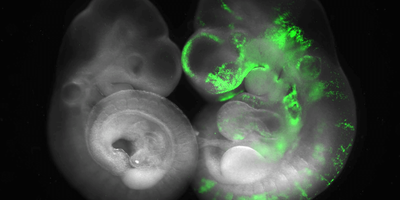Login
SubscribeNews
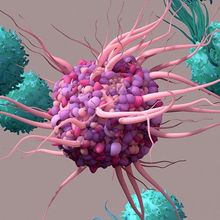
Circadian Signaling Affects T Cell Responses to Vaccination
Nathan Ni, PhD | Aug 9, 2023 | 3 min read
Annie Curtis’s research team revealed how circadian rhythm-regulated mitochondrial metabolism drives dendritic cell antigen presentation activity.
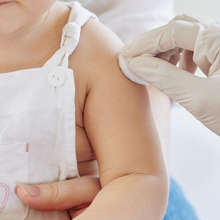
Vaginal Delivery Promotes Early Childhood Vaccine Response
Jennifer Zieba, PhD | Aug 8, 2023 | 3 min read
Researchers showed that the delivery method affects the microbiome and plays a role in the infant vaccine immune response.

Islands of Knowledge: Hairy Skin Moles Make Their Mark
Iris Kulbatski, PhD | Aug 7, 2023 | 3 min read
Skin moles that sprout thick, long hairs produce signaling molecules that stimulate hair follicle stem cells to initiate new hair growth. This discovery may make baldness a thing of the past.

Toward Better Biomarkers for Schizophrenia
Deanna MacNeil, PhD | Aug 7, 2023 | 3 min read
Researchers scratch the surface of schizophrenia susceptibility by uncovering DNA methylation differences in neonatal blood samples.
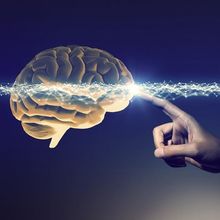
Shaping Brain Recovery Using Bioelectricity
Iris Kulbatski, PhD | Aug 4, 2023 | 3 min read
Scientists are decoding how electrically stimulating transplanted stem cells helps heal the injured brain.
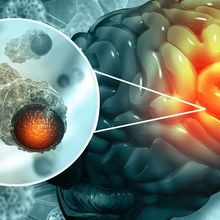
Capturing the Brain Tumor Microenvironment with Tissue Engineering
Deanna MacNeil, PhD | Aug 4, 2023 | 3 min read
Researchers built a 3D glioblastoma model to study therapeutic resistance and improve drug screening systems.
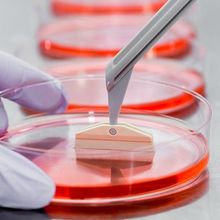
Inducing Cardiomyocyte Maturation
Jennifer Zieba, PhD | Aug 1, 2023 | 2 min read
By combining calcium and electrical pacing, researchers designed a scalable protocol for culturing mature cardiac tissues from induced pluripotent stem cells.

Simplifying the Search for Drug Targets
Aparna Nathan, PhD | Aug 1, 2023 | 3 min read
A new machine learning model promises fast prediction of drug-target interactions.
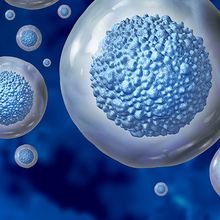
Death by Stem Cell: Developing New Cancer Therapies
Charlene Lancaster, PhD | Jul 24, 2023 | 3 min read
Khalid Shah engineers stem cells to deliver cancer therapeutics directly to tumors, thereby increasing their efficacy.
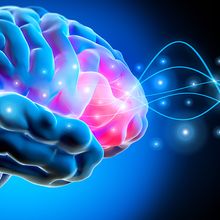
Turning up the Heat on Brain Tumors
Aparna Nathan, PhD | Jul 17, 2023 | 3 min read
Oncolytic viruses can help glioblastoma respond to immunotherapy.
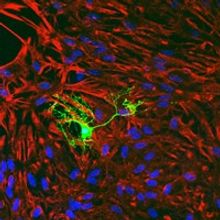
Searching for a Direct Route to Multiple Sclerosis Treatment
Deanna MacNeil, PhD | Jul 17, 2023 | 3 min read
Researchers created a new high-throughput tool to hunt for therapies that remyelinate the nervous system.

The Future of Gene Therapy for a Rare Pediatric Autoimmune Disease
Niki Spahich, PhD | Jul 10, 2023 | 3 min read
By editing a mutated immune regulatory gene in patient cells, Rosa Bacchetta brings hope to those suffering from IPEX syndrome.

On-Again, Off-Again Connections Advance Eye Regeneration
Iris Kulbatski, PhD | Jul 10, 2023 | 3 min read
Researchers track neural connections between retinal cells in a dish to understand their therapeutic potential.

Virus Alters Caterpillars’ Vision to Trick Them into Climbing
Alejandra Manjarrez, PhD | Mar 25, 2022 | 4 min read
A study finds that a baculovirus that infects cotton bollworm larvae changes the expression of genes involved in light perception, driving them to seek heights that could favor viral transmission.

Q&A: Scientist and Advocate BethAnn McLaughlin
Anna Azvolinsky | Aug 7, 2018 | 6 min read
The neuroscientist talks about her experiences with trying to change how the scientific community copes with sexual assault and harassment.
ACEs Wild
Steve Bunk | Dec 8, 2002 | 7 min read
Photo: Courtesy of King Pharmaceuticals OLD DRUG, NEW USES: Ace inhibitor ALTACE Clinical trials are under way in the United States to test new uses for angiotensin I-converting enzyme (ACE) inhibitors, as lab researchers around the world continue to compile evidence of further possibilities for the antihypertensive drugs. Meanwhile, a paper to be published this month presents a detailed theory that ACE functions at the start of a signaling pathway common to major diseases that are other
Above and Beyond
A. J. S. Rayl | Dec 8, 2002 | 5 min read
Photo: Courtesy of NASA ON THE HORIZON: New technologies will protect the health of astronauts on long space flights. Researchers at the National Space Biomedical Research Institute (NSBRI) are developing technologies to identify and monitor anticipated and unanticipated microorganisms in space--technologies, they suggest, that could also help to more efficiently diagnose medical conditions down here on Earth, as well as help detect biological hazards in this post-Sept. 11 world.1-3 Geo
Harmless Energizers or Dangerous Drugs?
Barry Palevitz | Dec 8, 2002 | 7 min read
Photo: Barry Palevitz HELP OR HINDRANCE? Ephedra-containing products like those pictured above are coming under increased scrutiny. You've probably seen the ads in the supermarket checkout aisle, or on radio and TV. "I lost 63 pounds with Hydroxycut," screams the headline in Cosmopolitan, above pictures of a woman going from corpulent to bathing-beauty trim in 19 weeks. "Diet Fuel changes the shape of your life," claims another ad, this time sporting an ab-flashing model in boxing gloves
Activists Broaden Efforts
Ted Agres | Nov 24, 2002 | 3 min read
Animal welfare activists, smarting from a defeat in Congress, plan to campaign across the United States to convince state legislators that laboratory rats, mice, and birds used in biomedical research require greater protection than afforded by federal law. Most major US research organizations, however, maintain that the 15 to 20 million animals used in labs--about 95% in biomedical research--are adequately protected under existing public and private regulations. More federal oversight, they sa
